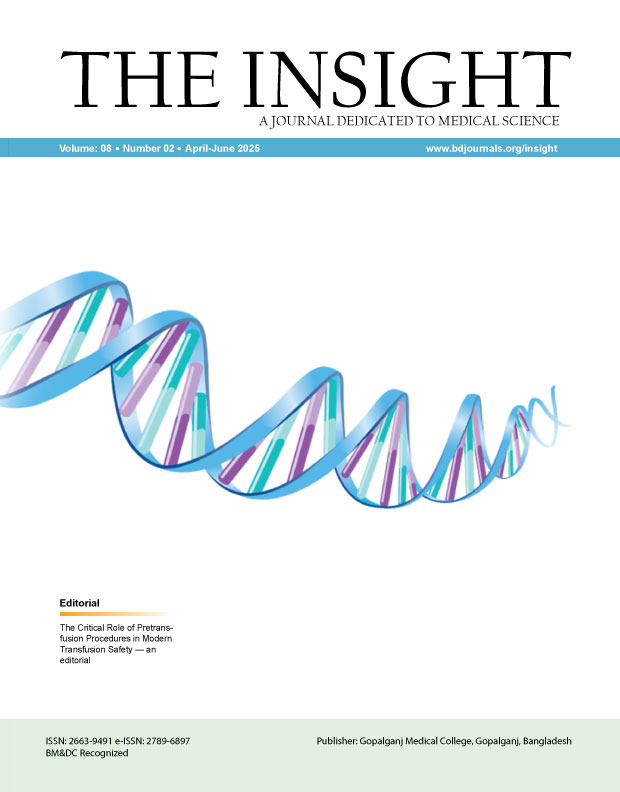Abstract
Introduction: Migraine is a disabling, recurrent primary headache disorder characterized by moderate-to-severe recurrent head pain associated with nausea, photophobia, and phonophobia. The research aims to quantify the prevalence and pattern of migraine among adults presenting at Bangladeshi tertiary hospitals. Methods & Materials: This was a cross-sectional observational study conducted among 58 adult patients who were seen in the Neurology Outpatient Departments of Neurology, Gopalganj Medical College, Gopalganj, Bangladesh between January 2024 and December 2024. Adults aged 18 years or more who met the ICHD-3 criteria for migraine and were willing to participate were included. Data were analyzed using SPSS version 26.0. Result: The female sex (74.1%) and age 26–35 years (41.3%) were predominant among the 58 patients. Migraine without aura was most frequent (72.4%), with 4–9 attacks per month and 4–12 hours' duration being most common. The most frequent precipitating factors were stress (69.0%), disturbance of sleep (65.5%), and exposure to noise (50.0%). Most frequent associated symptoms were nausea/vomiting (72.4%), photophobia (69.0%), and phonophobia (65.5%). Conclusion: This study establishes migraine as a prevalent neurological disorder in adults who are presenting to tertiary centres in Bangladesh, with extreme female predominance and highest prevalence in the age group of 26–35 years. Migraine without aura was present in most cases, and precipitating factors were stress, inadequate sleep, and sound exposure. In most patients, attacks lasted 4–12 hours, and were accompanied by nausea, photophobia, and phonophobia.

This work is licensed under a Creative Commons Attribution 4.0 International License.
Copyright (c) 2025 The Insight





 PDF
PDF